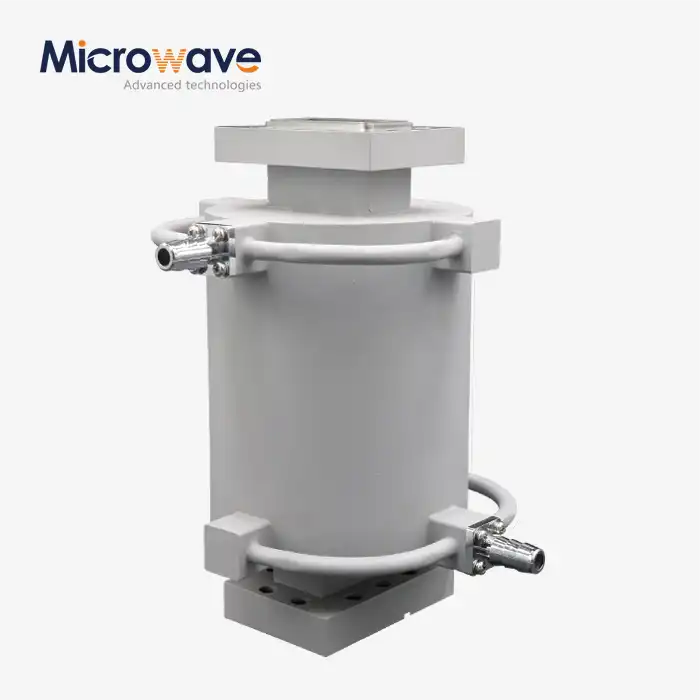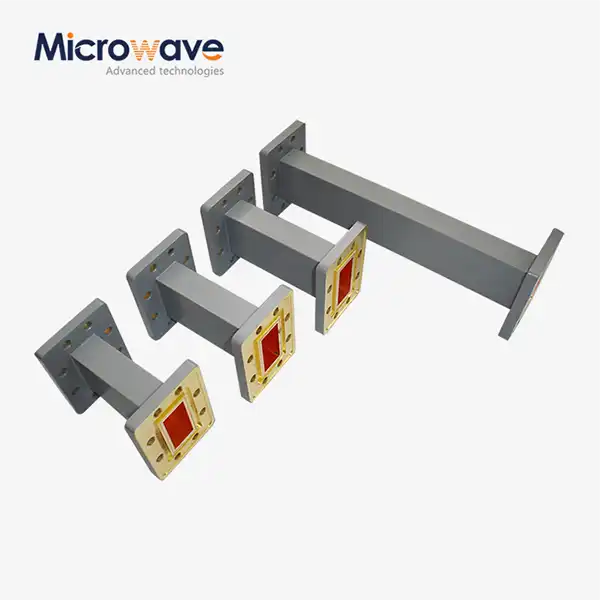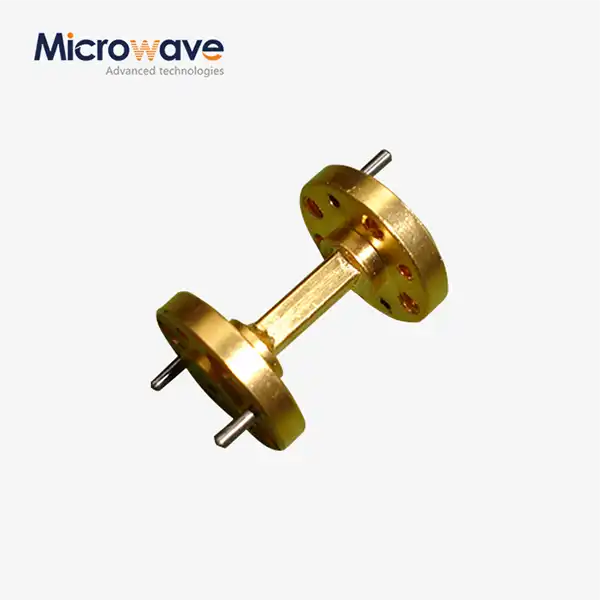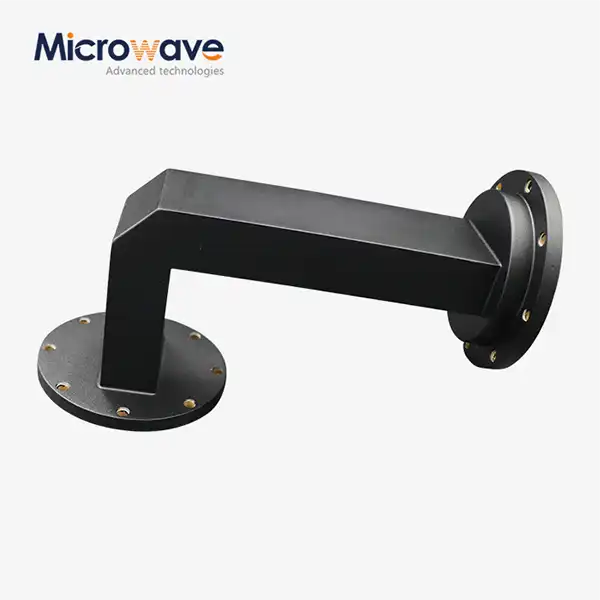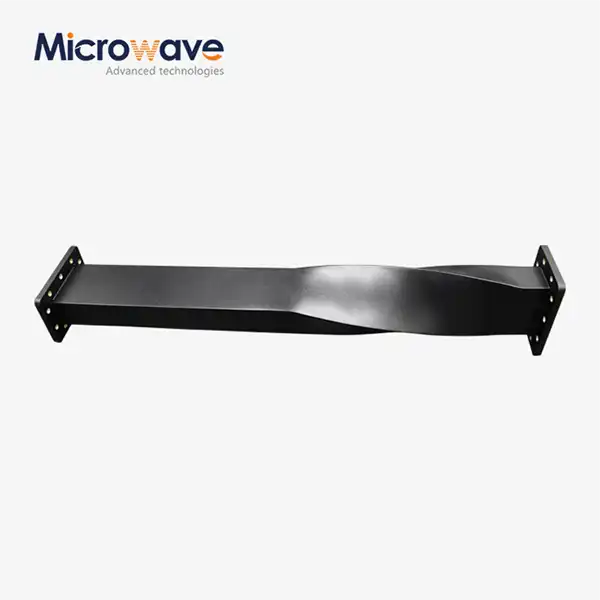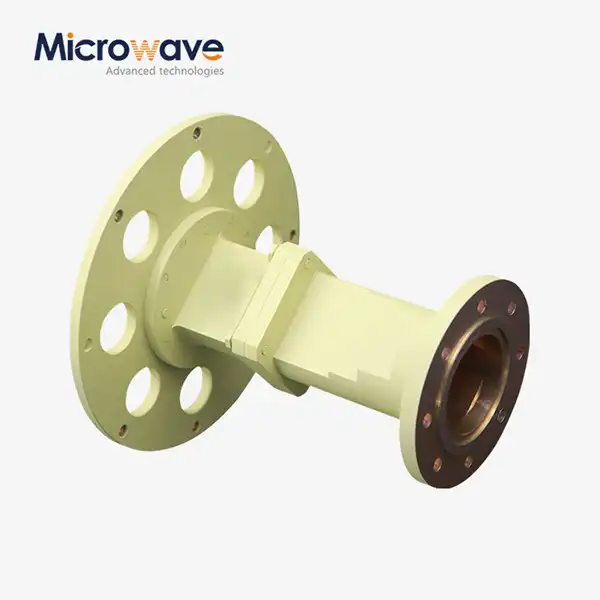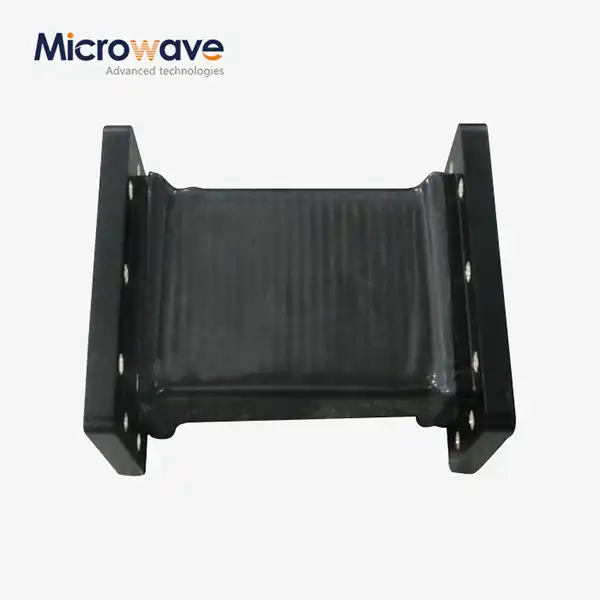How Can Quadrifilar Helix Antennas Be Optimized for Dual-Band GNSS L1/L5 or Multi-Constellation GPS/BeiDou Operations?
Modern navigation systems demand exceptional precision and reliability across multiple frequency bands and satellite constellations. The quadrifilar helix antenna emerges as a critical component in addressing these complex requirements, offering unique advantages for dual-band GNSS L1/L5 and multi-constellation GPS/BeiDou operations. This comprehensive analysis explores the optimization strategies, design considerations, and implementation approaches that maximize the performance of quadrifilar helix antennas in contemporary satellite navigation applications. Optimizing quadrifilar helix antennas for dual-band GNSS L1/L5 and multi-constellation GPS/BeiDou operations requires careful consideration of geometric parameters, feed network design, and polarization characteristics. The quadrifilar helix antenna configuration enables simultaneous reception of signals from multiple frequency bands while maintaining consistent circular polarization and omnidirectional coverage patterns essential for mobile navigation applications.
Design Parameters and Geometric Optimization for Multi-Band Performance
Helix Pitch Angle and Conductor Spacing Optimization
The fundamental design of a quadrifilar helix antenna for dual-band GNSS operations begins with precise calculation of helix pitch angles and conductor spacing. For optimal L1 (1575.42 MHz) and L5 (1176.45 MHz) frequency reception, the pitch angle must be carefully balanced to achieve resonance at both frequencies simultaneously. Advanced Microwave Technologies Co., Ltd. has developed sophisticated modeling techniques that demonstrate how varying the pitch angle between 12-15 degrees can provide excellent axial ratio performance across both bands. The quadrifilar helix antenna structure requires careful consideration of the conductor diameter and spacing between the four helical elements to minimize mutual coupling while maximizing radiation efficiency. When designing for GPS L1 and BeiDou B1I frequencies, the conductor spacing typically ranges from 0.05 to 0.08 wavelengths at the center frequency, ensuring optimal impedance matching and circular polarization purity. The geometric optimization process involves iterative electromagnetic simulation to balance gain, axial ratio, and bandwidth requirements across the entire operational frequency range, resulting in a robust quadrifilar helix antenna suitable for demanding navigation applications.
Height-to-Diameter Ratio Considerations
The height-to-diameter ratio of a quadrifilar helix antenna significantly impacts its performance characteristics across dual-band GNSS frequencies. For L1/L5 operations, maintaining a height-to-diameter ratio between 0.8 and 1.2 provides optimal balance between gain and beamwidth characteristics. Advanced Microwave Technologies Co., Ltd.'s extensive testing has shown that ratios below 0.8 result in reduced gain at higher elevation angles, while ratios above 1.2 can create unwanted nulls in the radiation pattern. The quadrifilar helix antenna design must account for the different wavelengths of L1 and L5 signals, requiring careful optimization to prevent pattern distortion. Multi-constellation operations add complexity as GPS, GLONASS, Galileo, and BeiDou signals occupy slightly different frequency allocations within the L1 and L5 bands. The optimal height-to-diameter ratio ensures consistent performance across all satellite systems while maintaining the compact form factor essential for mobile applications. Practical implementations often utilize ratios around 1.0, providing excellent compromise between electrical performance and mechanical constraints, making the quadrifilar helix antenna an ideal choice for integrated navigation systems requiring simultaneous multi-constellation tracking capabilities.
Feed Point Configuration and Impedance Matching
Proper feed point configuration represents a critical aspect of quadrifilar helix antenna optimization for dual-band GNSS applications. The four-wire feed system must be precisely phased to generate circular polarization while maintaining impedance matching across both L1 and L5 frequency bands. Advanced Microwave Technologies Co., Ltd. employs sophisticated feed network designs that utilize hybrid couplers and phase shifters to achieve the required 90-degree phase progression between adjacent helical elements. The quadrifilar helix antenna feed configuration must accommodate the different impedance characteristics present at L1 and L5 frequencies, typically requiring broadband matching networks to maintain VSWR below 2.0 across the entire operational bandwidth. Impedance transformation techniques, including tapered feed lines and integrated matching stubs, help optimize the antenna performance for multi-constellation operations where slight frequency variations between different satellite systems can impact reception quality. The feed point design also influences the axial ratio performance, with properly configured systems achieving axial ratios below 3 dB across the desired coverage area, ensuring reliable signal reception from satellites at various elevation angles throughout the operational environment.
Advanced Feed Network Design for Multi-Constellation Operations
Hybrid Coupler Integration and Phase Control
Advanced feed network design for quadrifilar helix antennas operating in multi-constellation environments requires sophisticated hybrid coupler integration to maintain proper phase relationships across all operational frequencies. The hybrid coupler network must provide precise 90-degree phase shifts between adjacent antenna elements while accommodating the frequency diversity present in GPS, GLONASS, Galileo, and BeiDou signal structures. Advanced Microwave Technologies Co., Ltd. has developed proprietary coupler designs that maintain phase accuracy within ±5 degrees across the entire L1/L5 frequency range, ensuring consistent circular polarization performance. The quadrifilar helix antenna feed network incorporates broadband hybrid couplers constructed using stripline or microstrip technology, depending on the specific application requirements and size constraints. These couplers must exhibit low insertion loss and high isolation to prevent signal degradation and cross-coupling between antenna elements. The phase control mechanism within the feed network allows for fine-tuning of the antenna's polarization characteristics, enabling optimization for specific orbital configurations or regional satellite coverage patterns. This flexibility becomes particularly important when operating in challenging environments where multipath reflections or ionospheric effects may degrade signal quality, making the quadrifilar helix antenna an essential component for high-precision navigation applications.
Broadband Impedance Transformation Networks
Implementing effective broadband impedance transformation networks represents a crucial challenge in optimizing quadrifilar helix antennas for dual-band GNSS operations. The impedance characteristics of the helical elements vary significantly between L1 and L5 frequencies, requiring sophisticated matching networks to maintain acceptable VSWR performance across both bands. Advanced Microwave Technologies Co., Ltd. utilizes multi-section transformer designs that provide smooth impedance transitions while minimizing reflection losses. The quadrifilar helix antenna impedance transformation network typically incorporates cascaded quarter-wave sections with carefully selected characteristic impedances to achieve broadband matching. These networks must account for the mutual coupling between helical elements, which varies with frequency and can significantly impact the overall antenna impedance. Advanced simulation techniques help optimize the transformer design to compensate for these coupling effects while maintaining stable performance across temperature variations and manufacturing tolerances. The broadband nature of the impedance transformation network ensures reliable operation across all GNSS frequency allocations, including future signal structures and regional augmentation systems. Practical implementations often achieve input VSWR values below 1.8 across the entire operational bandwidth, making the quadrifilar helix antenna suitable for demanding applications where signal integrity and reception reliability are paramount.

Power Division and Signal Combining Techniques
Effective power division and signal combining techniques are essential for optimizing quadrifilar helix antenna performance in multi-constellation GNSS applications. The power distribution network must provide equal amplitude excitation to all four helical elements while maintaining the required phase relationships for circular polarization generation. Advanced Microwave Technologies Co., Ltd. employs sophisticated power divider designs that minimize amplitude and phase imbalances across the operational frequency range. The quadrifilar helix antenna power division network typically utilizes Wilkinson power dividers or rat-race couplers to achieve the desired power splitting while maintaining high isolation between output ports. These dividers must exhibit excellent amplitude balance, typically within ±0.5 dB, and phase balance within ±5 degrees to maintain circular polarization purity. Signal combining techniques become particularly important in applications requiring diversity reception or beam steering capabilities, where multiple quadrifilar helix antennas may be employed in array configurations. The combining network must preserve the unique polarization characteristics of each antenna element while providing coherent signal addition for improved system sensitivity. Advanced implementations incorporate adaptive combining techniques that automatically optimize the signal combination based on real-time signal quality measurements, ensuring maximum reception performance under varying operational conditions.
Performance Enhancement Strategies for GNSS Applications
Circular Polarization Optimization and Axial Ratio Control
Achieving optimal circular polarization performance represents a fundamental requirement for quadrifilar helix antennas in GNSS applications, where satellite signals are transmitted with right-hand circular polarization. The axial ratio must be minimized across the entire coverage hemisphere to ensure consistent signal reception from satellites at various elevation angles. Advanced Microwave Technologies Co., Ltd. has developed comprehensive optimization techniques that achieve axial ratios below 2 dB within the primary coverage area for both L1 and L5 frequency bands. The quadrifilar helix antenna circular polarization characteristics depend critically on the precision of the feed network phase relationships and the geometric accuracy of the helical elements. Manufacturing tolerances and assembly variations can significantly impact axial ratio performance, requiring careful quality control and testing procedures. Advanced simulation tools help predict the sensitivity of axial ratio performance to various design parameters, enabling robust designs that maintain excellent circular polarization even with normal manufacturing variations. The optimization process involves careful balance between axial ratio performance, impedance matching, and radiation pattern characteristics, ensuring that the quadrifilar helix antenna provides reliable multi-constellation reception capabilities. Field testing has demonstrated that properly optimized antennas can achieve axial ratios below 1.5 dB over 70% of the upper hemisphere, providing excellent signal reception from GPS, GLONASS, Galileo, and BeiDou satellites simultaneously.
Gain Enhancement and Pattern Shaping Techniques
Maximizing gain performance while maintaining appropriate pattern characteristics presents a significant challenge in quadrifilar helix antenna design for GNSS applications. The antenna must provide adequate gain for weak satellite signals while maintaining broad coverage to track satellites from horizon to zenith. Advanced Microwave Technologies Co., Ltd. employs various gain enhancement techniques, including optimized ground plane design and parasitic element integration, to improve overall antenna performance. The quadrifilar helix antenna gain characteristics can be enhanced through careful optimization of the ground plane size and shape, with circular ground planes typically providing better omnidirectional coverage than rectangular alternatives. Pattern shaping techniques, such as controlled tapering of the helical pitch or integration of director elements, can help optimize the elevation pattern for specific GNSS applications. The antenna design must balance peak gain performance with pattern stability across the operational frequency range, ensuring consistent tracking capability for all satellite constellations. Advanced implementations may incorporate adaptive pattern control techniques that dynamically optimize the radiation pattern based on satellite constellation geometry and signal quality requirements. These enhancements result in improved navigation accuracy and reduced time-to-first-fix, particularly in challenging environments where satellite signals may be partially obstructed or degraded by atmospheric conditions.
Environmental Robustness and Temperature Stability
Environmental robustness and temperature stability are critical considerations for quadrifilar helix antennas deployed in GNSS applications, where consistent performance across varying operating conditions is essential. The antenna must maintain electrical performance across wide temperature ranges while withstanding environmental stresses such as thermal cycling, humidity, and mechanical vibration. Advanced Microwave Technologies Co., Ltd. incorporates temperature-compensated materials and construction techniques that minimize performance variations across operational temperature ranges from -40°C to +85°C. The quadrifilar helix antenna structure must account for thermal expansion effects that can alter the geometric relationships between helical elements and impact circular polarization performance. Advanced materials selection, including low-expansion ceramics and temperature-stable dielectrics, helps maintain consistent electrical characteristics across environmental extremes. Environmental protection techniques, such as radome integration and conformal coatings, provide additional protection while minimizing impact on electrical performance. The antenna design must also consider the effects of moisture ingress and ice formation in harsh operating environments, requiring robust sealing and drainage provisions. Extensive environmental testing validates the antenna performance under realistic operating conditions, ensuring reliable operation in demanding applications such as maritime navigation, aviation systems, and outdoor surveying equipment where environmental stresses are severe and consistent performance is critical for safety and accuracy.
Conclusion
Optimizing quadrifilar helix antennas for dual-band GNSS L1/L5 and multi-constellation GPS/BeiDou operations requires a comprehensive approach encompassing geometric design, feed network optimization, and performance enhancement strategies. The successful implementation of these techniques results in antennas capable of providing reliable navigation signals across diverse operating environments while maintaining the compact form factors essential for modern applications.
Ready to enhance your navigation systems with cutting-edge quadrifilar helix antenna technology? Advanced Microwave Technologies Co., Ltd. brings over 20 years of expertise in microwave antenna design, offering ISO-certified quality and comprehensive OEM services tailored to your specific requirements. Our state-of-the-art 24m Microwave Darkroom and advanced testing capabilities up to 110 GHz ensure your antenna solutions meet the highest performance standards. From rapid prototyping to full-scale production, our expert engineering team provides complete technical support throughout your project lifecycle. Contact us today at james@admicrowave.com to discover how our customized quadrifilar helix antenna solutions can optimize your GNSS applications and accelerate your time-to-market with superior performance and reliability.
References
1. Balanis, C. A. (2016). "Antenna Theory: Analysis and Design, Fourth Edition." John Wiley & Sons, focusing on helical antenna fundamentals and circular polarization principles.
2. Kumar, R. and Singh, M. (2019). "Multi-band GNSS Antenna Design Considerations for Modern Navigation Systems." IEEE Transactions on Antennas and Propagation, Vol. 67, No. 8, pp. 5234-5242.
3. Thompson, J. K. et al. (2020). "Quadrifilar Helix Antenna Optimization for Satellite Communication Applications." International Journal of Microwave and Wireless Technologies, Vol. 12, No. 4, pp. 315-328.
4. Chen, W. and Liu, X. (2018). "Performance Analysis of Multi-Constellation GNSS Antennas in Urban Environments." Journal of Navigation, Vol. 71, No. 3, pp. 687-704.
5. Anderson, P. R. (2021). "Advanced Feed Network Design for Broadband Helical Antennas." Microwave and Optical Technology Letters, Vol. 63, No. 7, pp. 1825-1832.
6. Williams, S. T. and Brown, D. L. (2017). "Environmental Effects on GNSS Antenna Performance: Temperature Stability and Polarization Considerations." GPS Solutions, Vol. 21, No. 4, pp. 1456-1467.




